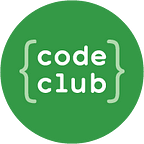Protect the Planet — A Moonhack project 2023
In schools, offices, and homes a computer mouse is a common item to find. Whether it is wired, wireless, or a touchpad, a computer mouse gives users the ability to interact with a computer.
In the early 1960s, this was the design brief that Bob Taylor, who worked at NASA, had. Back then computers were seen as arithmetic machines. Taylor worked on flight control systems, flight displays, and simulation technology for NASA and wanted a device that would allow users to interact with data and design on a computer.
Doug Englebert was a researcher that led this project and presented several designs including the mouse and a light pen. The mouse tested the best and was patented by Englebert in 1967.
Haven’t registered for Moonhack yet? Make sure you register here to be counted.
The idea that a mouse was invented for Space Exploration made it a great choice of topic for this year’s Moonhack. The Scratch project Protect the Planet was developed where the player uses their mouse to control the game and hopefully protect the planet!
This Scratch coding project is aimed at users who have some experience with coding and are able to understand more complex forms of branching and using variables to control a score and lives. In the game, stars appear on the screen randomly and the user controls the aim, with their mouse, and clicks the star to protect the planet. The game tracks points score and uses this information to control how many lives a player has. The game ends when the lives reach zero.
Australian Curriculum Links
This project is an example of work for the year 5–6 band of the Digital Technologies curriculum. The algorithms incorporate complex branching and iteration, with user input as a key control feature. The use of clones is used and is then incorporated with costumes and randomisation to create a key feature.
This project also features the use of variables. The first variable is in the form of a score system. The user receives points for shooting each star. This variable controls the speed of the stars showing on screen. As the points get higher the stars show more frequently. The second variable is in the form of lives. The player starts with 10. Each star they miss they lose a life, with the game ending when they reach 0 lives.
This project also links well to Science as a Human Endeavour by exploring how people use science in everyday lives. The mouse was one solution to a problem, but is now an everyday use object.
Meet our testers
One group of young people that tested this project were from St Helen’s in Tasmania. The school Code Club, run by one of their teachers Ms Kawajit, was excited to provide feedback and ideas about this game.
Coders from St Helen’s were testers for all 6 Moonhack projects! They had lots of great feedback and were able to rectify some coding errors. They also had fantastic ideas for what could be included in the challenges for the projects, and different ways that the algorithms could be created. Kaye had the pleasure of visiting the club in person recently, chatting with the testers, hearing about their experiences, and sharing some coding knowledge.
Further Resources
To see this project in action check out our Code Along video where Kaye teaches the project in a step-by-step video. Why not use this for your coders to follow along with?
For more information about this invention check out this article about Douglas Englebart who is in the National Inventors Hall of Fame.
Moonhack takes place from October 10th to 26th in 2023. Make sure you register to be counted in this year’s numbers!
Kaye
Moonhack Mission Control
